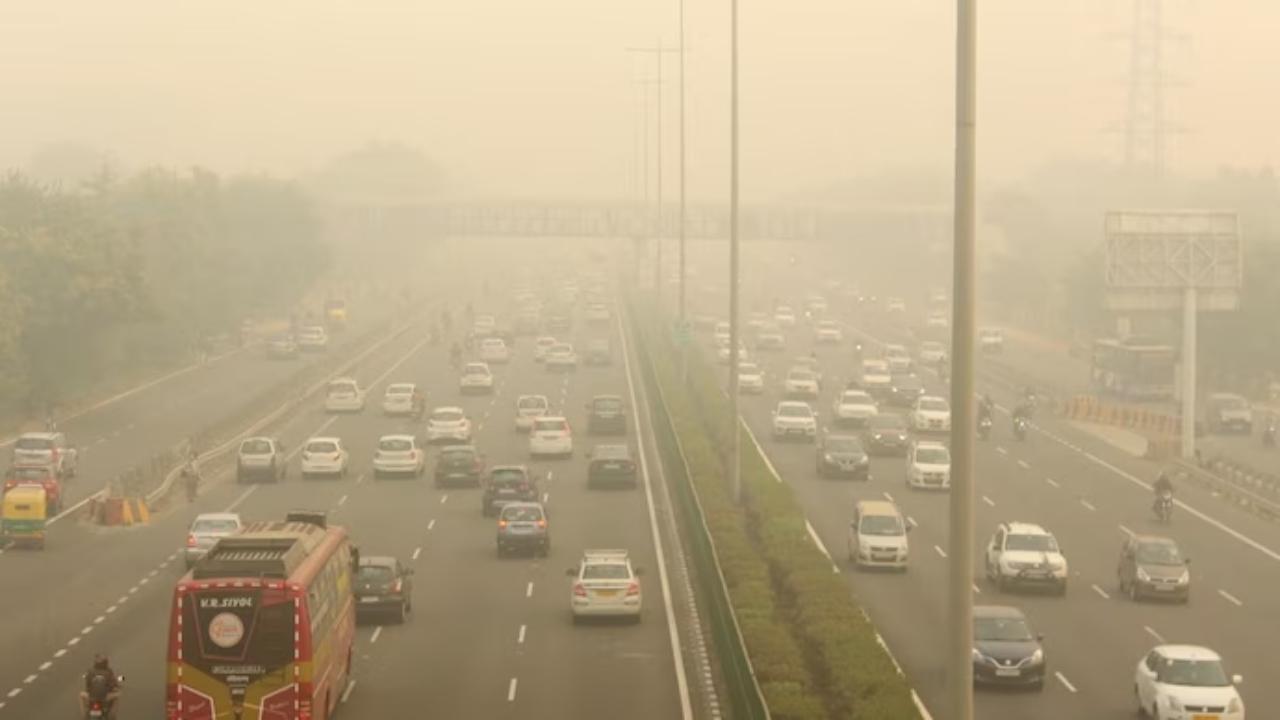The air quality in Delhi has deteriorated to the 'poor' category, with an Air Quality Index (AQI) reading of 256, according to SAFAR-India

File Photo/PTI
The air quality in Delhi has deteriorated to the 'poor' category, with an Air Quality Index (AQI) reading of 256, according to SAFAR-India. To combat pollution, an anti-smog gun was employed in the Anand Vihar area, and the air quality around Delhi University was recorded at 316 (very poor). Noida registered an AQI of 269 (poor), while Gurugram's AQI stood at 176 (moderate). A new anti-pollution drive is set to commence in the national capital.
ADVERTISEMENT
Residents in Delhi are facing health issues due to the poor air quality, with one resident expressing frustration over the recurring problem, citing coughing and throat irritation. The Environment Minister, Gopal Rai, has called for a ban on firecrackers in the National Capital Area ahead of Diwali to mitigate pollution levels. Rai noted a slight improvement in air quality on Wednesday and suggested that the ban on firecrackers in neighboring states would further improve the situation. However, he anticipates that air quality may worsen again after October 30.
Also read: Mumbai: BMC sets yet another deadline for Gokhale bridge
Stubble burning in Punjab and Haryana continues to be a concern, contributing to Delhi's worsening air quality. Despite over 2,500 cases of stubble burning reported this year, the numbers are relatively better than in previous years. The Graded Response Action Plan (GRAP) has been implemented in Delhi to address increased pollution levels.
The Air Quality Index categorizes air quality into six categories: Good, Satisfactory, Moderately Polluted, Poor, Very Poor, and Severe, with each category based on ambient concentration values of air pollutants and their potential health impacts. The AQI scale defines air quality as "good" between 0 and 50, "satisfactory" from 51 to 100, "moderate" from 101 to 200, "poor" from 201 to 300, "very poor" from 301 to 400, and "severe" from 401 to 450.
The city government had Monday directed all district magistrates to conduct inspections in their areas to ensure strict implementation of all pollution mitigation measures.
Delhi Environment Minister Gopal Rai said the government has identified eight more pollution hotspots in addition to the existing 13 in the national capital, and special teams will be deployed there to check pollution sources. Rai said the government has also decided to use suppressant powder to prevent dust pollution in the city.
Dust suppressants could include chemical agents like calcium chloride, magnesium chloride, lignosulfonates, and various polymers. These chemicals work by attracting and binding fine dust particles together, making them too heavy to become airborne.
The Minister also said the government will re-launch a campaign to curb vehicular pollution on October 26, a year after Lieutenant Governor V.K. Saxena put it on hold, questioning its effectiveness.
 Subscribe today by clicking the link and stay updated with the latest news!" Click here!
Subscribe today by clicking the link and stay updated with the latest news!" Click here!








